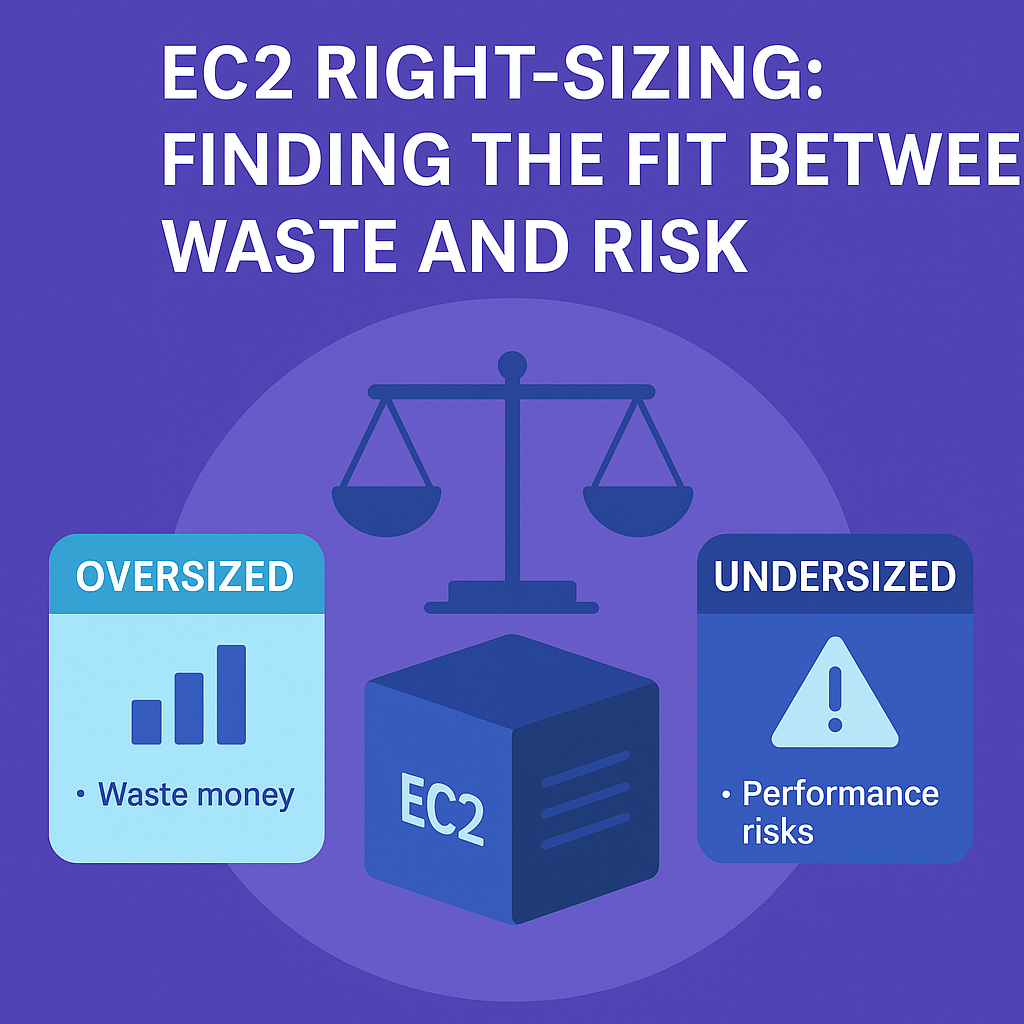📏 EC2 Right-Sizing: Finding the Fit Between Waste and Risk

One of the most common - and expensive - issues in AWS environments is improper instance sizing. At Lensix, we frequently flag EC2 instances that are either oversized and wasting money or undersized and creating hidden performance risks.
Right-sizing is about more than just cutting costs; it's about ensuring efficiency, stability, and performance across your environment.
💡 Why it matters
Too large and too small instances are costly, just in different ways:
- Oversized instances:
- Waste money on idle capacity
- Inflate reserved instance or Savings Plan commitments
- Burn budget with little to no performance gain
- Undersized instances:
- Lead to throttling, crashes, and latency spikes
- Trigger alerts and support tickets
- Obscure root causes due to a lack of headroom
🧩 How Does It Happen?
- Lift-and-shift migrations: Older environments are moved to the cloud without sizing review.
- Guesswork provisioning: Developers or tools pick instance sizes without baselining workloads.
- Set-and-forget: Instances are launched and never re-evaluated, even as usage patterns change.
- Excess Caution: Teams avoid downsizing to "play it safe," resulting in long-term inefficiency.
- Automation misses: It's a good thing to control sizing in automation, but it needs to be correctly implemented.
⚠️ Common Signs You Need to Right-Size
- CPU utilization is consistently < 10% or > 90%
- Non-freeable RAM usage is minimal or constantly maxed out
- Burstable instances are frequently hitting credit depletion
- You're relying on size instead of scaling for variable workloads
✅ What to do about it
Lensix can help you identify and track instances that need right-sizing. Here are some manual things to check:
- Audit utilization trends: Use CloudWatch data to baseline usage across days and weeks.
- Size by usage profile: Match instance types to actual workload patterns (bursty, steady, IO-bound, compute-heavy, etc).
- Use instance families intentionally: Don't just default to a general-purpose instance if your workload fits better on a compute-optimized or memory-optimized instance.
- Test performance at smaller sizes: You can always scale back up if needed.
- Architect for scaling instead of brute force: add smaller instances as demand increases and remove them when it declines.
- Align with Savings Plans and Reservations: Make sure your commitments reflect your actual usage.
🔁 Alternatives and Enhancements
- Use Auto Scaling Groups to adjust capacity dynamically
- Consider Graviton-based instances for better price-performance
- Move to Fargate or Lambda for ephemeral workloads
- Tag and monitor "critical" vs. "non-critical" workloads separately
- Build regular right-sizing into quarterly infrastructure reviews
💬 Bottom Line
Right-sizing isn't about being cheap, it's about being smart. Oversized instances quietly drain your budget. Undersized ones silently degrade your reliability.
Lensix helps you find both and gives you the context to fix them safely.


